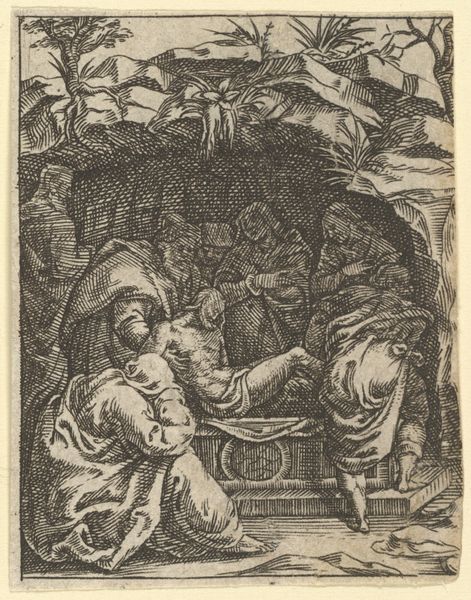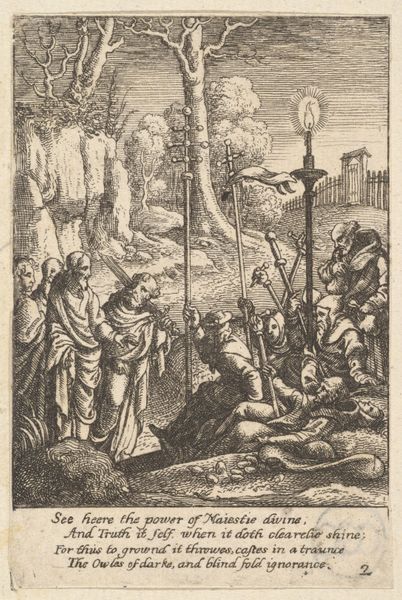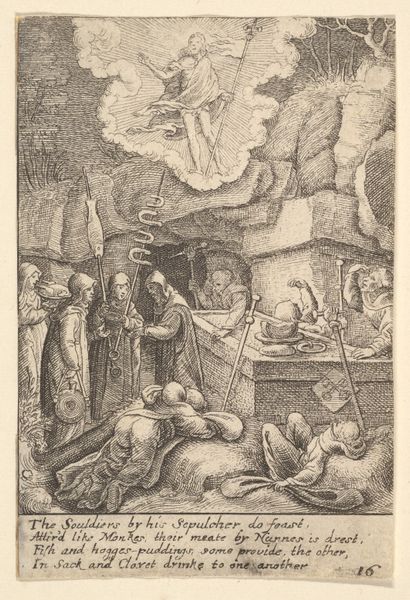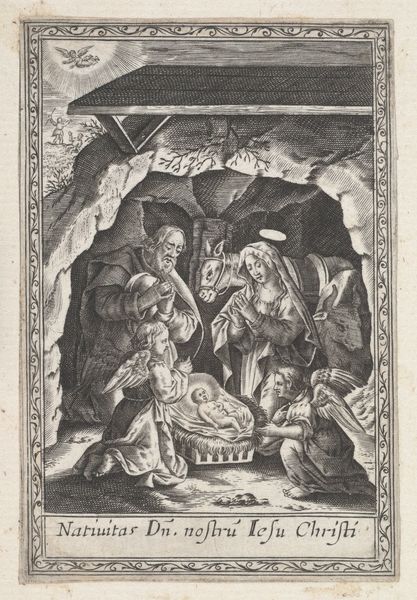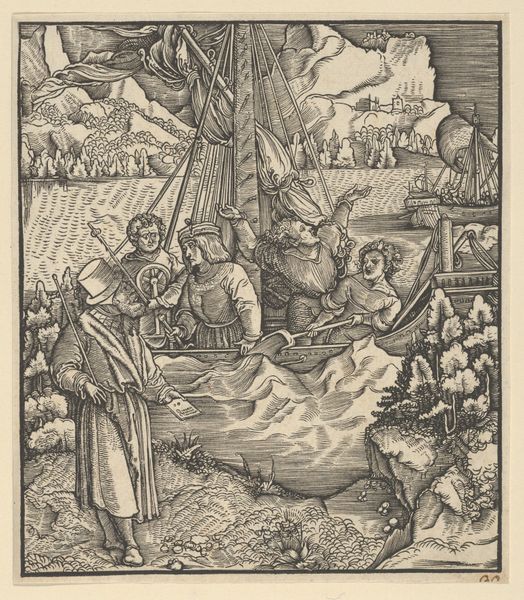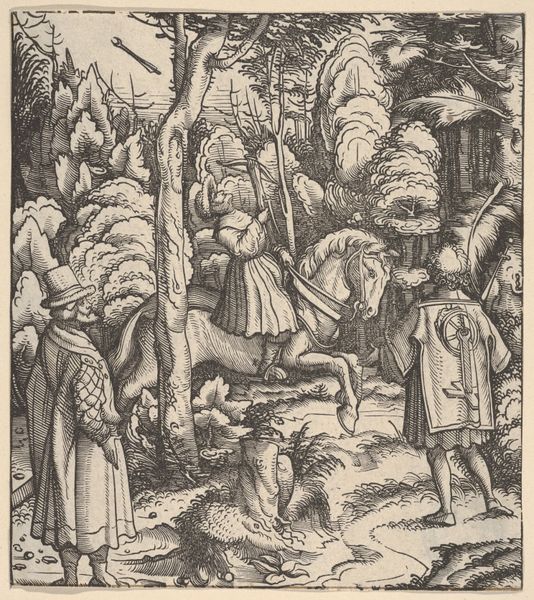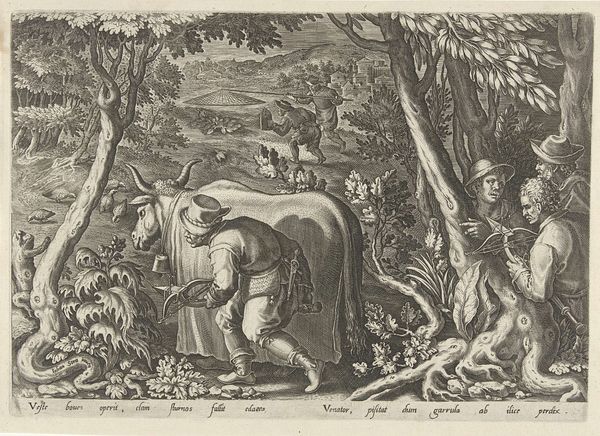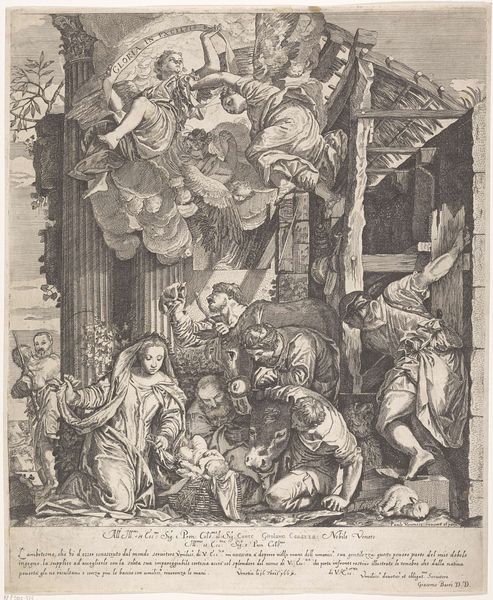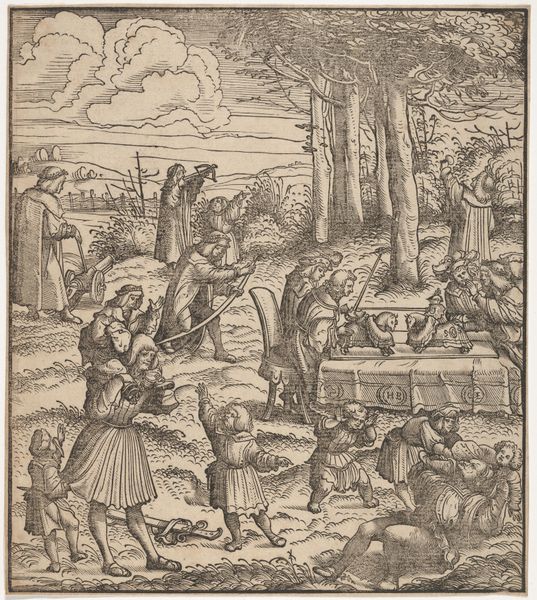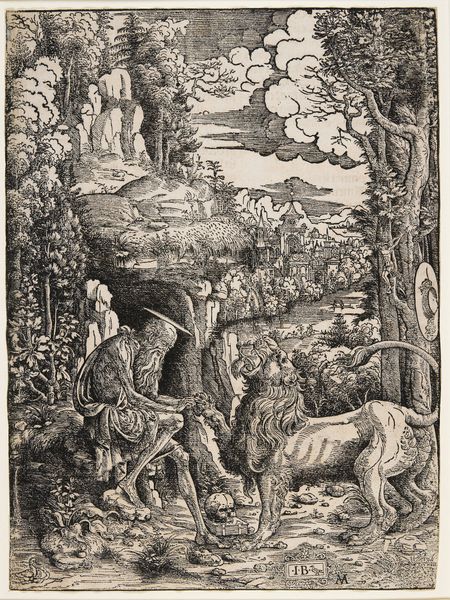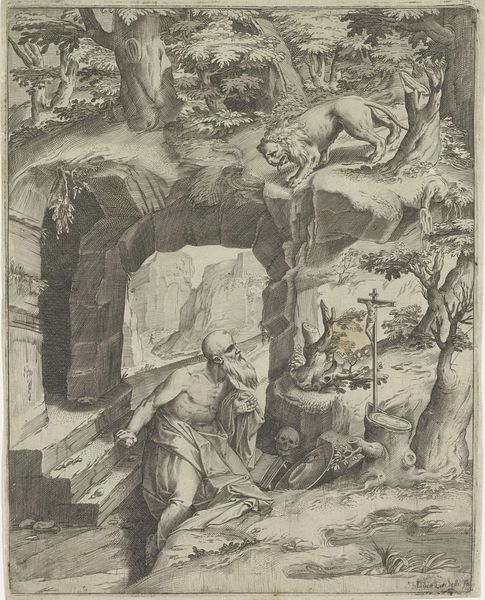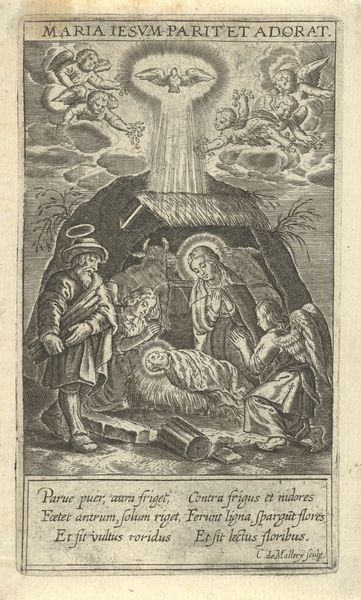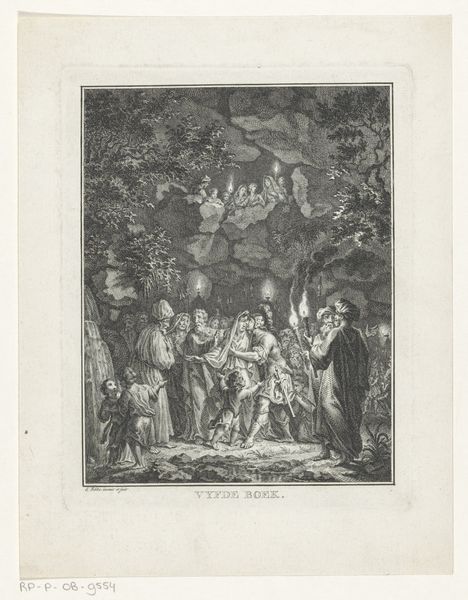
print, engraving
#
portrait
#
baroque
# print
#
landscape
#
figuration
#
history-painting
#
engraving
#
virgin-mary
Dimensions: Sheet: 3 1/2 × 2 3/8 in. (8.9 × 6 cm)
Copyright: Public Domain
Curator: Wenceslaus Hollar created this engraving, "Entombment," between 1644 and 1652. The print is currently held at the Metropolitan Museum of Art. What strikes you most about it? Editor: Immediately, I'm drawn to the landscape looming above the figures. There is a barren quality to the composition, despite the subject being the burial of Christ. The weight of that landscape is almost pressing down on the scene. Curator: Absolutely. Hollar masterfully uses the landscape here. The barren trees, the rough rock, all enhance the somber tone. It’s as if the very earth is mourning. We see similar symbolism in other Entombment depictions throughout art history—the cave often symbolizing not just the tomb, but also the darkness of the world. Editor: That cave as a symbol… It emphasizes the theme of mortality. Looking at the figures, there's this somber group carrying the body, their faces shadowed, their movements careful. You know, depictions of burial or mourning have always been a loaded narrative when contextualized against different moments of social or political grief. Curator: Indeed. Think of all the variations of that specific grief across time. The engraver’s lines really communicate this grief – note how the characters are clustered, all bending their heads toward the Christ's body, creating a sort of unifying rhythm of loss. And it extends past just visual rhetoric of loss: the inclusion of a poetic lament underscores both historical fact and religious parable of loss of the divine in a mortal world. Editor: Yes, and even the clothing adds a layer to it. While the garb signifies a historical and religious period, clothing as visual representation also represents hierarchical structures in this period, even during an act of ultimate grief. Curator: That’s a very compelling interpretation. Considering how figures of authority often employed religious sentiment as a social strategy… Editor: Exactly! When re-examining this imagery, one must see the narrative between personal piety and public persona. In these prints that were made available for wide consumption, what did these images ask from people in terms of empathy, action and personal conviction? Curator: These symbolic depths certainly echo across time. I always marvel at how art, even within set symbolic constraints, holds so many levels of meaning to peel back. Editor: Definitely, understanding the context of its production allows for the opening of these crucial lines of inquiry and investigation of cultural themes.
Comments
No comments
Be the first to comment and join the conversation on the ultimate creative platform.
